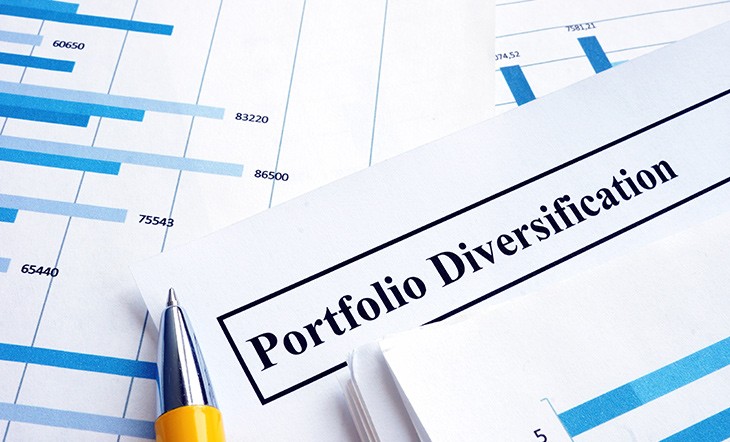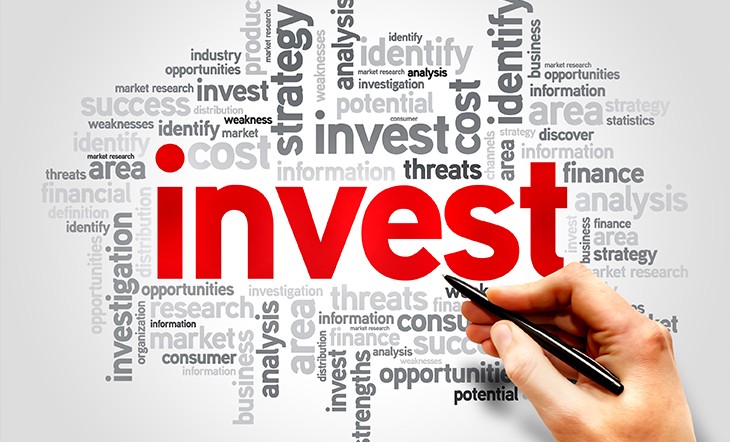What You Need to Know Before Diving into Alternative Investments

Alternative investments can be a good way to diversify your portfolio and potentially earn better returns. However, they may be high on the risk meter. They also require entirely different strategies than conventional options like mutual funds, stocks, bonds, or Exchange-Traded Funds (ETFs). This makes it essential for you to understand what these assets are, how they operate, and how you can invest in them correctly.
It is highly advised to consult a financial advisor to understand the place of alternative investments in a portfolio. This article covers some important points that may help you understand alternative investments so you can invest in them with minimal doubts.
Below are 5 things you need to know about alternative investments before you invest in them:
1. Not everyone is eligible to invest in alternative assets
While some options are open to a broad range of investors, others come with strict eligibility criteria. Non-traditional mutual funds, for example, offer alternative strategies. These funds are available through regular investment accounts and can be bought and sold much like any other mutual fund. They can provide exposure to alternative strategies without the need for accreditation or investing large sums of money.
However, many alternative investments are reserved for only qualified or accredited investors. These can include hedge funds, private equity, venture capital, etc. To qualify as an accredited investor, you must have a net worth of over $1 million, not counting your primary residence. Alternatively, you must have earned income exceeding $200,000 individually or $300,000 with a spouse in each of the past two years. Financial professionals with certain licenses or expertise may also qualify for alternative investments, even if they do not meet the income or net worth thresholds.
These requirements are in place because alternative investments can carry higher risks. They also do not offer a lot of liquidity and need complex strategies that may not suit every investor. Therefore, before you commit to an investment, it is important to understand the eligibility and whether it aligns with your personal financial goals, risk tolerance, and investment experience. Ideally, if you are interested in exploring this space, you should consult a financial advisor or investment professional to get a clear understanding of the qualifications and risks involved.
2. There are several types of alternative investments
You can explore a number of alternative investments, such as the following:
- Private equity: Private equity involves investing in private companies that are not listed on public exchanges. These funds often require large capital commitments that can be held for several years, making them relatively illiquid. Most investors in private equity are institutions or individuals with substantial wealth. A private equity fund is managed by a General Partner (GP), who makes investment decisions and typically contributes 1% to 3% of the fund’s capital. In exchange, the GP charges a management fee, often around 2%, and may take a share of the profits, typically 20%.
- Venture capital: Venture capital is a form of private equity focused on startups and early-stage companies with growth potential. While private equity usually targets mature companies, venture capital supports new businesses. High-net-worth individuals, known as angel investors and venture capital firms, provide this funding. These investments are risky but can offer the potential for large returns.
- Hedge funds: These funds are actively managed investment pools that typically invest in liquid assets. Unlike mutual funds, they operate with fewer regulations and are usually accessible only to wealthy investors. When it comes to hedge funds, researching the fund manager’s experience, strategy, and regulatory history is essential before investing.
- Commodities: Commodities include physical goods such as oil, gold, silver, or agricultural products. You can purchase the actual commodity or invest through funds that track these commodities. Commodities are riskier than stocks, but they can act as a hedge against inflation.
- Collectibles: Collectibles include items like art, wine, vintage cars, rare coins, or even sports memorabilia like baseball cards. These assets can appreciate substantially in value over time. However, they can also be tricky as there is no fixed benchmark for their valuation. They may also not be easy to liquidate as finding buyers can be challenging.
- Cryptocurrency: Cryptocurrency is a digital currency that, unlike fiat currencies, operates outside traditional banking. Some well-known cryptocurrencies include Bitcoin and Ethereum. Cryptocurrencies can be highly volatile. While they offer the potential for high returns, they are also one of the riskiest alternative investments.
- Real estate: Real estate is also considered to be an alternative investment. It can offer exposure to a wide range of options, such as commercial, residential, and agricultural properties. Real estate may require high capital, depending on the type of property, which increases the risk involved.
3. Fees and costs for alternative investments can differ from conventional investments
Fees and costs for alternative investments are not the same as traditional options like stocks, bonds, mutual funds or ETFs. These investments often carry higher costs that can eat into your returns, including management fees and other administrative expenses. For instance, the GP in private equity may charge a management fee of 2%. Additionally, hedge funds may typically charge a management fee of 1% to 2% of assets under management, along with a performance fee of 20% of any profits earned. In many cases, these fees are designed to reward fund managers for generating returns, but they also affect your profitability as an investor. Alternative investments also charge a performance fee, which is a percentage of the investment’s profits that goes to the fund manager. This is often in addition to a base management fee. Some alternative investments may also include a markup on the assets themselves, typically ranging from 0% to 10%, which can further reduce the net return to investors.
The minimum investment amounts for most alternative investments also tend to be much higher than traditional assets. Where mutual funds or ETFs might have minimums as low as a few hundred dollars, many alternative investments require tens or even hundreds of thousands just to get started. These high thresholds can pose a problem and limit access to high-net-worth individuals or institutional investors.
However, despite the higher costs and investment amounts, alternative investments may have lower transactional costs. This is because many of these investments follow long-term strategies and do not buy and sell assets frequently. As they trade less, there are fewer costs incurred from brokerage fees, which add to the overall profits. Understanding all of these costs is critical before committing capital to an alternative asset.
SPONSORED WISERADVISOR
Alternative investment strategies may differ from regular investment strategies
Alternative investment strategies often follow a very different approach compared to traditional investment approaches. It is important to understand how the capital is committed and managed over time in these assets so you can make the right decision. You can generally choose from two main structures - drawdown and evergreen vehicles.
Drawdown funds have been the more traditional route when it comes to alternative investments. Here, you can commit a certain amount of capital upfront, which is allocated in portions over a multi-year investment period as suitable opportunities arise. Returns, including the original principal and any profits earned, are returned to you gradually as the underlying assets are sold. Evergreen funds, on the other hand, are more flexible and have gained traction in recent years. These funds allow for immediate capital deployment. They may reinvest profits within the fund. Evergreen funds offer periodic liquidity and may hold 10% to 30% of the portfolio in public market securities or cash-like assets to maintain liquidity for redemptions. They usually come with lower minimum investment requirements, too.
A diversified approach that combines both evergreen and drawdown funds can provide you with exposure to gains while maintaining some level of liquidity. However, discussing both options with a financial advisor before proceeding is important.
4. Process of investing in alternative investments
Many alternative investments are offered through specialized platforms, and so the process can vary depending on the firm or type of asset. However, most platforms follow a fairly standard path to get you started.
The first step is to open an account. This involves providing personal details such as your full name, phone number, email, home address, and proof of address. You will also be asked to verify your identity through a government-issued ID and enter your Social Security number. However, if you are investing through a platform that serves accredited investors only, there will be additional requirements. You may need to provide supporting documents to verify your status, such as income tax returns, bank statements, or a letter from a licensed financial professional. Accredited investors are generally those who meet income or net worth thresholds, and platforms must confirm this before allowing access to certain offerings.
Once your account is set up and verified, you will need to link a payment method. Most platforms accept transfers from a bank account, though some may allow wire transfers. After setting up a payment method, you can choose your investment. Alternative assets vary widely, and you have many options to choose from, such as real estate projects, private equity funds, venture capital, hedge funds, collectibles, and more. Make sure to understand their individual potential, liquidity, and risk before selecting one.
Some platforms set specific minimum investment amounts for each asset. Depending on the asset, risk level, and investor type, these can range from as little as $10 to $20,000 or higher. For platforms open to all investors, you can typically browse available offerings once your account is active and funded. If you are on an accredited-only platform, your proof of eligibility must be accepted before you can invest.
5. Pros and cons of investing in alternative investments
Alternative investments can offer a range of advantages as well as challenges. They are unique assets but also complex. Nevertheless, they can be a part of a well-rounded portfolio, especially if you are looking beyond the traditional mix of stocks and bonds.
Here are some pros of investing in alternative investments:
A great advantage is that alternative investments have the potential to generate returns that are relatively less correlated to traditional markets. This soothes out the overall performance of your portfolio. For example, if your portfolio is more concentrated on equity and the stock market is declining, alternative investments, such as private equity, commodities, etc., may still perform well. Another benefit of investing in these assets is the potential for higher returns, especially with alternative investment strategies like private equity, venture capital, or hedge funds. Some alternative assets, such as real estate and infrastructure and commodities like gold and silver, can also act as a hedge against inflation. Additionally, alternative investments can give you access to asset classes or strategies that are typically not available in public markets, which can offer broader exposure.
That said, alternative investments also have some cons, as highlighted below:
These assets tend to be more complex and less transparent than traditional funds. Moreover, many of these assets are limited to accredited investors due to regulatory restrictions and the risk involved. They can also require a significant capital commitment and longer investment horizons. Liquidity is one of the most evident drawbacks of alternative investments. Your investment can be locked up for several years with limited options for early withdrawal.
You also have to be mindful of fees and associated costs. Most alternative investments come with higher management costs and, in many cases, performance fees. These can impact your returns and may be difficult to justify unless the investment performs exceptionally well. On top of that, many alternative strategies involve the use of leverage, which can affect both profits and losses. Another challenge is the lack of regulation. Alternative investments are bound with fewer rules and can allow for more flexibility. Moreover, they also put more responsibility on the investor to understand the risks involved. Unlike mutual funds or ETFs, which are required to disclose performance data, alternative funds may not offer the same transparency.
Given these pros and cons, it is crucial to approach alternative investments thoughtfully. They are not suitable for everyone, and before you invest your money, you need to consider your risk tolerance, liquidity needs, financial goals, and how alternative investments might fit into your overall portfolio. It is also important to work with a financial advisor so you can decide whether they are right for you.
To conclude
Alternative investments can provide diversification and the potential for high returns. They can be especially appealing during periods of market volatility. However, they are not for beginners. They require substantial capital, a higher tolerance for risk, and a good grasp of more complex investment structures. While you may venture into them to gain exposure and diversify your portfolio, you must also understand how alternative investment strategies align with your overall goals, comfort level, and time horizon. A financial advisor can help you understand these factors and decide whether alternative investments belong in your portfolio.
Use the free advisor match tool to get matched with experienced financial advisors who can help you understand alternative investments and offer guidance on whether you should add them to your portfolio mix. Answer a few simple questions and get matched with 2 to 3 vetted financial advisors based on your requirements.








.jpg)













.jpg)





.jpg)


.jpg)


.jpg)















.jpg)






.jpg)



.jpg)


.jpg)






.jpg)

.jpg)






.jpg)




.jpg)

.jpg)



.jpg)




.jpg)

.jpg)
.png)


.jpg)



.jpg)
.jpg)

.jpg)



.jpg)

.jpg)

.jpg)
.jpg)
.jpg)

.jpg)

.jpg)




.jpg)


.jpg)

.jpg)

.jpg)

.jpg)
.jpg)
.jpg)
.jpg)

.jpg)




.jpg)
.jpg)


.jpg)
.jpg)
.jpg)
.jpg)

.jpg)
.jpg)















.jpg)



.jpg)

.jpg)




.jpg)









.jpg)



